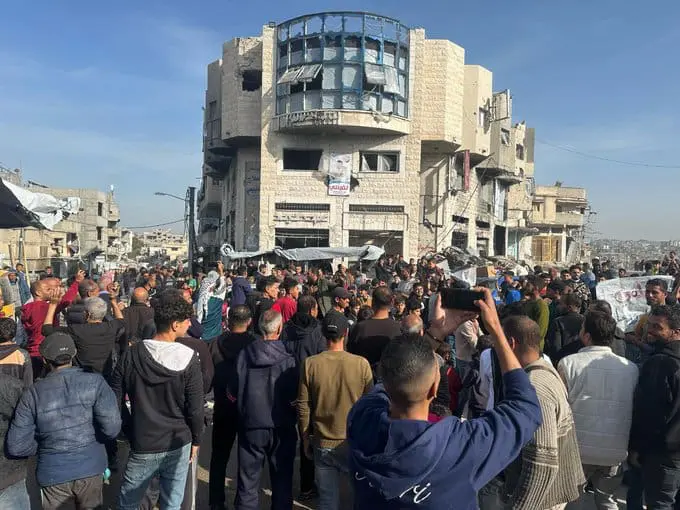Civilians in Gaza have begun openly protesting against Hamas, the Iranian-backed terror organization that has ruled the coastal strip with an iron fist since 2007. Chanting slogans such as “Yes to peace, no to Hamas’ tyrannical rule” and “Enough of the war, enough of the destruction—in Gaza,” demonstrators gathered outside the Indonesian Hospital in Beit Lahia, signaling a potential internal shift that could destabilize the group from within.
Footage circulating on social media shows hundreds of Gazans confronting Hamas operatives, with reports that protesters have even thrown stones at Hamas agents who attempted to suppress the demonstrations.
“Hamas! Our people in Gaza demand your downfall!” protesters shouted in videos
This eruption of grassroots resistance comes after months of suffering, displacement, and starvation, caused not by Israel’s actions, but by Hamas’ decision to launch a genocidal war against Israel on October 7—a war that has turned Gaza into a battlefield at Iran’s behest.
The Beginning of the End?
These protests are not merely about food shortages or living conditions. They are a direct rejection of Hamas’ rule, ideology, and allegiance to Iran’s regional terror axis. For the first time in years, ordinary Palestinians are risking their lives to say what the world has refused to hear: Hamas does not speak for Gaza. It enslaves it.
According to intelligence analysts, this may mark the beginning of an internal collapse of the terror regime—especially as Israeli military pressure continues to eliminate Hamas leaders, dismantle command centers, and disrupt supply chains.
“If Israel is smart, it can help fuel this. Let Hamas fall from within,” one analyst noted.
A Moment for Israel to Capitalize
Israel has long maintained that Hamas is the enemy of both Israelis and Gazans. These protests validate that position. While the international community has often blurred the lines between Hamas and Gaza’s civilian population, the people of Gaza are now making that distinction themselves—loudly and bravely.
This presents a strategic opportunity for Israel to undermine Hamas from within by amplifying civilian voices, leveraging psychological operations, and continuing precise military pressure on the group’s leadership and infrastructure.
The images from Beit Lahia are a powerful reminder that some in Gaza want peace, not jihad. They want freedom from Hamas, not more tunnels, rockets, or martyrs. As these rare protests grow, the world must decide: Will it continue to excuse a terror regime, or will it finally stand with the civilians calling for Hamas’ downfall?




